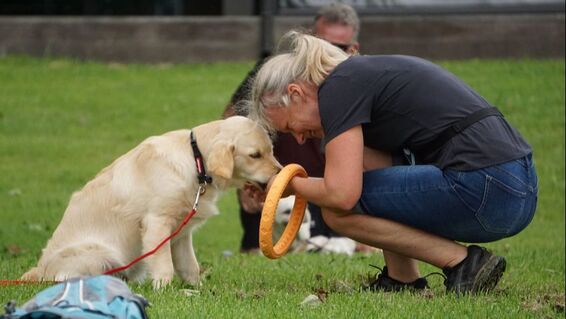|
There’s something to be said about recognising your intuition and listening to it, when something doesn’t feel right. Whether it’s a prickly feeling on the back of your neck, a twist in your tummy… our bodies have a really good knack for giving us signals that something is not exactly going how it should. This instinct is even stronger when it involves those we care about, such as our children… or our dogs.
It can be hard to know what to say and do when we are presented with advice from professionals that makes us feel uneasy. There is a lot of information about how to train, and what we need to do to ensure our dogs are well behaved in society. With all this information, it can be daunting to sift through it all and decide what to actually train - so reaching out to a professional is often a good first step. But what if the pet professional you pick then directs you to do something that makes you feel… not quite right? Sometimes it can be handling techniques that make your dog look worried or concerned, or perhaps it could be information that doesn’t really fit your understanding of how your relationship works with your dog. There may even be more extreme moments where you are worried for your dog’s wellbeing. These situations can be difficult to navigate, because the trainer is supposed to know best - but this entry is here to give you the confidence to back yourself up. For this blog, we will be focusing on approaches from dog trainers, but pet professionals include your groomers, veterinarians, doggy daycare staff etc… You don’t have to be a professional to have intuition about your own dog, and to know what feels right or wrong. We have attended many consultations where owners mention that it felt wrong to jerk a leash in correction, that they felt uncomfortable with the pressure that was put on their dog, or comments like ‘you need to be the boss’ didn’t sit right. In the same way you wouldn’t let a human teacher be aggressive and intimidating with your child at school, these intuitions are also perfectly valid to listen to when it comes to training your dog. Many dogs do not respond well to pressure. Some dogs fully shut down, and some dogs end up responding defensively to protect themselves. If you push them, they push back or redirect to other behaviours. There are signs a dog is uncomfortable - which are much more subtle than the obvious fear behaviour like a tucked tail or making themselves smaller, is something called displacement behaviour. If your dog suddenly seems distracted, like sniffing somewhere without an obvious smell, or starts to become evasive, are signs that your dog is trying to get rid of some stress they are feeling about a situation. If a technique a trainer suggests to you isn’t something you are comfortable with, you are well within your rights to communicate that discomfort. After all, your dog may not be getting the opportunity of choice in that circumstance. We can understand that it’s daunting, when you are the student, to advocate and potentially create conflict. But it is in these moments we’re standing up for what feels right is actually the most important thing you can do. The repercussions of following advice that doesn’t fit for your dog can be extremely damaging to your relationship, and to future training endeavours. A talented trainer understands that not all dogs are the same, and can provide alternative approaches for each dog’s unique needs. It is not a one size fits all, and even in positive reinforcement training there are adjustments that need to be made for different needs. Sometimes, a high pitched, high energy recall approach scares a more sensitive dog - which does not lead to their recall improving! So you have to go slowly and calmly instead. You need to be aware that it is a service meant to HELP you, and your dog. If it is seemingly doing the opposite, then communicating this is extremely important. You should always feel safe and supported enough with your trainer to be able to question the what, why and how of training methods, or let us know that a suggestion given may not work for you. This is ESPECIALLY true if you believe it will be at the detriment of your dog’s overall wellbeing. I try to encourage every student in my classes, and truly hope they feel like they can come to me if something isn’t right for their training. Learning is not about being bossed around, it’s a two-way system of dialogue, and includes the teacher sometimes finding out something new from listening to the student (and this point is complex enough for a follow up blog post!) Please trust your gut, and speak up for your dog. You know them better than anyone else does. They’re relying on you to be their voice in situations where they are otherwise voiceless. Authored by Sarah Endres Dog Trainer and Behaviour Advisor
1 Comment
Adrienne
7/11/2023 12:58:03 am
Hello! I’m professional CPDT-KA certified dog trainer Adrienne Farricelli, creator of Brain Training for Dogs To learn more, <a href="https://1ed5cqq3ee71imaa47k791p75p.hop.clickbank.net" target="_blank">click here</a>.
Reply
Leave a Reply. |
AuthorsArticles created by the team at Allsorts Dog Training, Bay of Plenty, New Zealand Our Library
All
|


 RSS Feed
RSS Feed